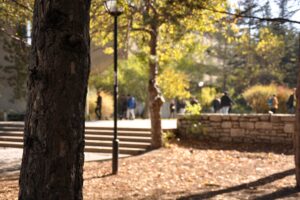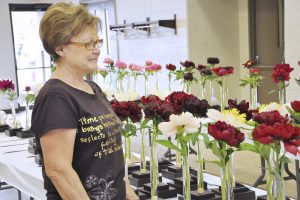By Frank Vick – Prince Albert, Sask.
I enjoy reading The Senior Paper and I look back with a great deal of nostalgia at many of the similarities that appear in our childhood life experiences. I’m especially touched by the references to the poverty, lifestyles, and little country schools that many of us experienced.
A few miles northwest of our homestead on Section 6 stood a body of water called Whitelock’s Lake. As I grew older, I saw it for what it was: a large slough. It had shallow muddy shores, tall reeds, and spiky grasses protruding above the water for some distance from shore.
From this drainage basin, tending west-northwest, cutting through the genteel sloping terrain, was a small valley. Where it entered the northwest quarter of Section 4, the valley floor was perhaps 25 feet below the average terrain.
During the 1920s, the land immediately west and south contained small areas of cultivated land. To the north and east, stood a forest of trembling aspen and a few scattered balsam poplars and spruce trees.
Deer bounded over open ground
Prior to the introduction of settlers, the entire area was covered by aspen groves and willow bush interspersed with grassy open areas. This was the favoured territory of the “apsimooses”, or deer, in Cree.
As the country became settled, deer were less visible. Occasionally while en route to school, one would catch a glimpse of a mule deer or few. They bounded over the open ground before disappearing into the valley. It was their route to the water supply of Whitelock’s Lake.
A few hundred yards north of this little valley, located in the NW1/4, Sec 4, TP/54, RG/21, West of the Third Meridian, was the country schoolhouse. Constructed in 1922, it was School District No. 3918. Appropriately named Deer Valley School, this was in recognition of the little geographical feature a few hundred feet away.
It was a typical one-room country school with a horse barn, outside toilets, a woodpile, and a smoking furnace that belched heat on cold winter days.
Inside the room, students took their places in single or double wooden desks set in rows facing a large slate blackboard, above which was located a map cabinet. Up front, dead centre, sat the teacher – the ruler of the roost.
Each hardwood desk was equipped with an inkwell. Students’ sole possessions were generally pencil boxes and a few ruled workbooks. Every student introduced to Grade 1 was issued a primary reader.
Quirk in landscape
I was told the school wasn’t located in the centre of the school district, as was usual, because of the quirk of nature placing Whitelock’s Lake in that position. The result was that our family had five miles via road allowance to travel to reach the school.
This was indeed a very long, and often painful trip, in winter for small children. It was an equally arduous task in spring and fall. The trip was made on foot because the horses were needed to labour in the fields.
As soon as the ground warmed to the spring sun, footwear was cast aside. We became the barefoot children of the aspen forest and fields. The soles of our feet became calloused and hard to the point that only rusty nails and sharpest thorns could penetrate.
The speed at which we could run and jump, and the feel of soft wet mud oozing between our toes, made nature’s footwear a pleasure, not a hardship. Anyway, who could afford shoes?
Even now in my aging years, I can close my eyes in reminiscence of those yesteryears and can imagine hearing those distant voices of country school children at play. Unfortunately, through the absence of forethought and lack of finances, the building was dismantled. Like many of its counterparts across the landscape, a monument to our history has gone.
Now, when the shadows of a summer evening are cast in bronze upon this faceless abandoned patch of ground, only the memories remain of this once vital spot in the aspen groves, just north of the Valley of the Deer.



